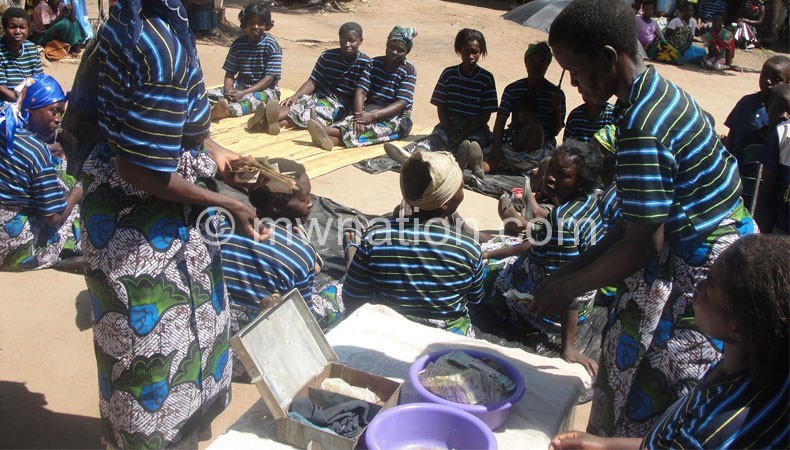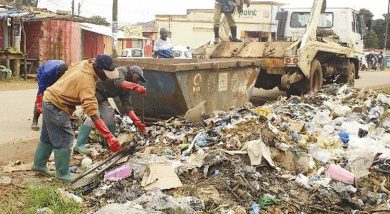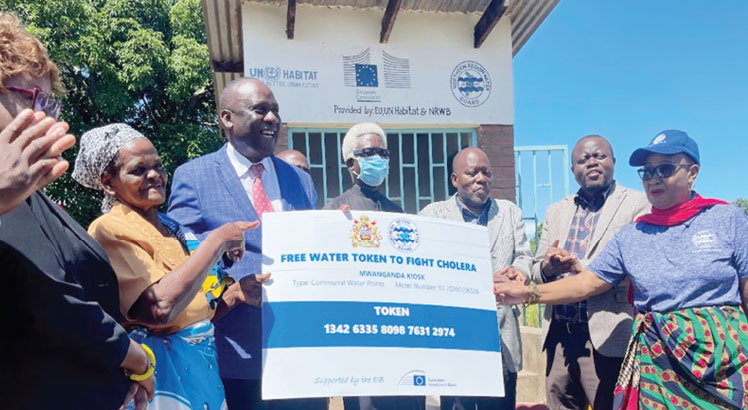Is integrated development the answer?

Experiences of using integrated development as a solution to fighting rural poverty appear to show interesting results. Could this be the general formula for fighting poverty?
“We didn’t know the enormous resources we have, the strengths we have, the rights we have, the voice we have, the space we have.
“We can no longer sit back and expect someone to do things for us; we mobilise ourselves and request support where we cannot manage.
“All the changes you see in this village are our own making,” says Janet Mpinganjira of Namkumba Village in Dowa.
Mpinganjira was, three years ago, a poverty statistic. In fact, she was among the people who the 2010 Demographic Household Survey (DHS) categorised to be the 52.4 percent of the population living below the poverty line, with 22.4 percent barely surviving.
However, when the Catholic Development Commission (Cadecom), with support from Caritas Australia, began to implement an integrated development programme in her area, her life moved from being a statistic of absolute poverty.
Mpinganjira—a mother of four who used to be penniless, always dependent on a husband, a subsistence farmer—is almost her family’s breadwinner today.
–Solutions within communities–
Through Village Savings Loan (VSL), Mpinganjira is now a successful commercial farmer of tomato and potatoes.
“Our focus,” says Martin Mazinga, Cadecom national programmes coordinator, “is to help local communities to see solutions within their communities.
He adds that Cadecom, which is operating in 24 of the country’s 28 districts, uses a Strength-Based Approach (SBA) which empowers locals to be drivers of their own change.
“Through SBA, communities, today, can echo what former president he late Bingu Wa Mutharika said that Malawi is not poor but it’s the people who are poor.”
“We recognise that a human being is an integral being, as such when it comes to the question of development, which is actually access to services one requires, there is need of taking into consideration all the aspects that make a human being complete.
“We decided to take an integrated approach to our programmes, based on the premise that it is only a holistic approach that can help the rural masses move out of the dungeon of poverty,” he explains.
–Integrated development —
Cadecom’s encouraging experience in executing the integrated development approach in fighting rural poverty is invoking the same old debate the viability of integrated development as a long-lasting approach.
It must be underlined, however, that Cadecom is not the first and also the only large-scale player in using integrated development as a panacea for fighting rural poverty.
The recently winded up USAID-funded Wellness and Agriculture for Life Advancement (Wala) Program was also one of a large scale proponent of integrated development.
Not only that.
The government of Malawi, too, from as early as 1960 used to fight poverty using the Integrated Rural Development (IRDP) model. This, according to economics professor Ephraim Chirwa, involved mostly the extension of rural roads and intensification of agriculture which culminated into the formation of the Agricultural Deveopment and Marketing Corporation (Admarc).
However, by 1976, government IRDP was integrated into a nationwide National Rural Development Programme (NRDP).
Despite being a component in NRDP, integrated development, as an approach, has remained at the heart of Malawi’s post-colonial government strategies of fighting rural poverty.
In fact, its recent robust execution by Cadecom and Wala lays credence to its viability.
So could integrated development be long-lasting answer to fighting rural poverty?
In a 2010 paper titled Integrated Rural Development: the Concept and its Operation, development researcher Gustav Nemes argues that integration in rural development in developing countries is, mostly, discussed in two ways.
“It’s most common understanding concerns the integration of various economic sectors—agriculture, industry, services. Another frequently mentioned aspect is the integration of those disadvantaged social groups in the development process (women, elderly people, national and ethnic minorities, etc.) which could suffer even more if left out of improvements,” he writes.
–Fighting rural poverty–
Nemes further notes that though integrated development approach has proven a key approach of fighting rural poverty, there is a serious problem with its design and implementation which makes nations to fail to get the best out of it.
He argued that “rural development policies tend to fail because the central bureaucratic system imposes top-down control and objectives throughout the development process, thus failing to sufficiently promote the reconfiguration of local resources, which is better achieved through bottom-up processes and the local heuristic system”.
“In other words, the tendency to disjunction between the two basic socio-political systems of rural development is the main reason for the failure of rural development policy,” he writes.
Ernest Muyila, a post-graduate development studies student at Chancellor College, agrees with Nemes.
“The reason IRDP faced a lot of challenges when it was being rolled out in the 60s and 70s was that it employed a top-down approach both in terms of donor funding and its design of implementation. Locals were only at the receiving end.
“The sense of ownership, as result, was not there. Even worse, because locals viewed it as an imposition, they could only accept it on face-value, in the process, leading it to lack of sustainability,” he says.
–New approaches–
Mazinga, in agreement with the issues raised by the two, points out that SBA and Rights Based Approach, which Cadecom is using in its project areas, are irreversibly empowering communities not just to find solutions to their problems but also to find their voice regarding demanding redress from duty bearers, herein, government officials.
“Examples are enormous where communities are demanding and now receiving services from the local government. Our empowerment has brought the communities closer to the government and the government closer to the people as the main duty bearer. This, to us, represents a change in attitude among the communities—something which is a sustainability issue,” he says.
He also notes that through SBA, Cadecom is leading by stepping back.
“We let the communities be the drivers of their own development, as it is their own agenda, well articulated in their community visions—a development road map which every community we work develops as the baseline and benchmark for their theory of change.
“The establishment of strong community level committees in water and sanitation and village savings and loans, farm club associations for example promote a sense of ownership and ensure activities are managed in a sustainable manner,” he says.
Beyond that Mazinga, however, underlines that government must do all it can to make sure that everyone and every group of people enjoy complete development.
“What the government must do should include making sure that there is equality of opportunity to access, among other necessities of life, basic resources, education, health services, food, shelter, employment and roads and other communication facilities,” he says.
He adds: “As we complement government efforts in making sure that the citizens enjoy a dignified life, at the same time keeping an eye on the government as the main duty bearer”.





